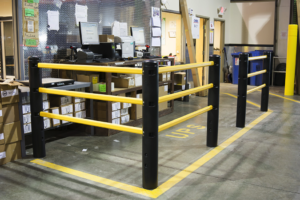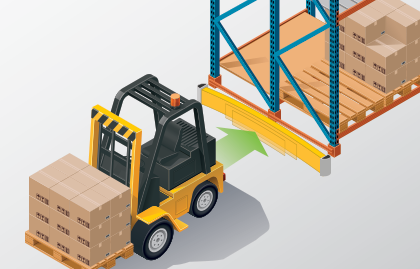As a health and safety professional, you know better than anyone how important it is to avoid incidents that can jeopardize an employee's physical wellness. Between the hard costs and the hidden soft costs of on-the-job injuries, your organization could end up deeply in the hole. Let's review some of the costs and the ways you can help employees avoid injuries in the first place.

On-The-Job Injuries are Expensive as Heck
According to an OSHA study, lost productivity due to workplace injuries costs companies around $60 billion each year. Fines for safety violations increased in 2016 to $12,675 per violation and $126,749 for a willful or repeated offense.
And those are just the lost productivity and fines portions of the costs. But there are some other costs to consider:
• Raised insurance premiums
• Temp labor costs
• Potential new-hire relocation
• Overtime costs
• Additional supervision and administrative costs associated with hiring
• Lost productivity due to insurance claim paperwork
• Lost productivity due to decreased morale
• Medical costs for others who witnessed trauma
Let's talk about those last two bullet points. If there is a drop in morale, you might see a loss of trust (in procedures, machinery, systems or fellow employees) propagate throughout the business, causing an increased feeling of uncertainty and a slower pace of work. That cost doesn't stop with lost productivity; depending on an incident's severity, it can extend to increased insurance premiums due to increased payouts for employees who witnessed the incident.
So what can you do to avoid the likelihood of an injury, and therefore, avoid the many potential costs associated with a safety incident?
Prevention is Paramount
First and foremost, never forget the inherent value of each individual in your organization. When you're designing safety initiatives that are geared toward preventing injury, start by valuing the individual above all. Beyond the hard and soft costs, consider the humanity of each employee as you craft your program.
Then consider how you could train during onboarding to ensure that employees:
• understand every procedure
• understand the risks of deviation from a procedure
• have the right tools to maintain awareness
• have the right tools to perform the job safely
• are committed to helping maintain the safety of every other employee
Though prevention is the ideal, it doesn't always pan out. Accidents happen! When they do, you can find a learning opportunity there, as well. First and foremost, log every single incident, even if you think it's unlikely to lead to sunk costs. If you don't have control over this or might not be on the floor when an injury occurs, be sure to institute a reporting system for all team managers, and use training time to encourage individuals to report incidents, as well.
Then, as you walk through the costs associated with said incident, also revisit the safety procedures and checklists in place to find out if you need to update anything due to a change in workflow, or if you need to change a workflow due to a change in overall process. Consider what procedures or equipment might have changed leading up to this incident that could have negatively impacted safety. Performing this search after every incident will help you adjust in the necessary fashion to prevent future on-the-job injuries.




